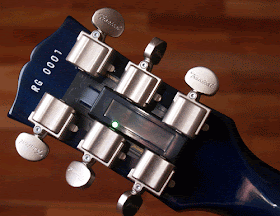Hello and welcome to this week's article!
Today we will try to understand how
compression work, in a much deeper level than how we've seen before, because the idea is to
stop using presets as much as we can, and to do every step of sound sculpting - mixing with a purpose, with the complete awareness and control of what we are doing.
As we can see in the image, that wave (let's imagine it's a snare hit), can be divided in four different moments:
A - Attack: the beginning of the hit, that rises up to the peak of the sound
D - Decay: the initial lowering of from the highest peak to the body of the sound
S - Sustain: a part of the sound (which we can consider the "body") in which the volume remains more or less constant for a certain amount of time
R - Release: the final decay of the sound from the sustain part to the silence
Let's now consider also the four most common controls we have in a
compressor:
Attack, Release, Ratio and Make Up gain.
Attack: how fast, when a sound surpasses a certain threshold, the
compressor kicks in
Release: how fast the gain reduction goes back to zero
Ratio: how strong the gain reduction must be. If 2:1 means that for every 2db that surpass the threshold, the
compressor make them sound as loud as 1db.
Make up gain: helps us keeping the overall level of the sound comparable to its unprocessed version, so we can turn it up or down until it sits well again in the mix,
Practical applications: In order to use
compression properly we need to ask ourseves the reason why we should add it to our channel insert (and if there is no good reason, we just shouldn't): does our track need more attack? Does out track need less attack and more body? Does our track need some dynamic control? Here are some examples of practical use of a
compressor:
-
We need more body on our snare: we can dial in our
compressor the
attack to be fast, and to find a ratio that reduces the attack part of our wave of some db, so that it is comparable to the sustain part: this way the quieter parts of the sound (namely the sustain and the release) have more headroom to be raised in level, and therefore the snare sound will have a quieter initial crack, but a much longer and fatter body.
So by squashing the attack, we increase our sustain.
-
We need to give more attack to our bass: if we want to raise the attack on our bass (for example to make the sound of the fingers on the strings to pop out more), what we need is to turn down the sustain part of the sound, so that the attack remains high, and then we raise the overall level with the makeup gain. How do we lower the sustain part? by turning the release on our
compressor down. So,
by squashing the sustain, we increase our attack.
- We need to make a vocal track with a high dynamic range even: if we have a song in which the vocals have some part in which it's just a whisper and other in which the singer yells from the top of his lungs, we have a huge dynamic range, and we need each part to be audible the same.
First off
when tracking, it's important to set the gain properly according to the loudness of the part (adjusting the input knob in order to reduce the dynamic range a bit), then in the
project preparation phase we could do some volume
automation to reduce further the dynamic range before starting
compressing, so that the
compression will be less aggressive in evening out the levels, and finally we can compress, using a fast attack and adjusting the ratio in order to tame the peaks and let the quieter parts to be audible as all the rest.
As we have seen the approach that needs to be understood in order to use
compression properly is a
REVERSE APPROACH: do we need to boost the sustain because compared to the attack it is too low? We lower the attack and raise the level of the whole wave, instead of trying to raise the sustain part to match it with the attack part.
Become fan of this blog on Facebook! Share it and contact us to collaborate!!










